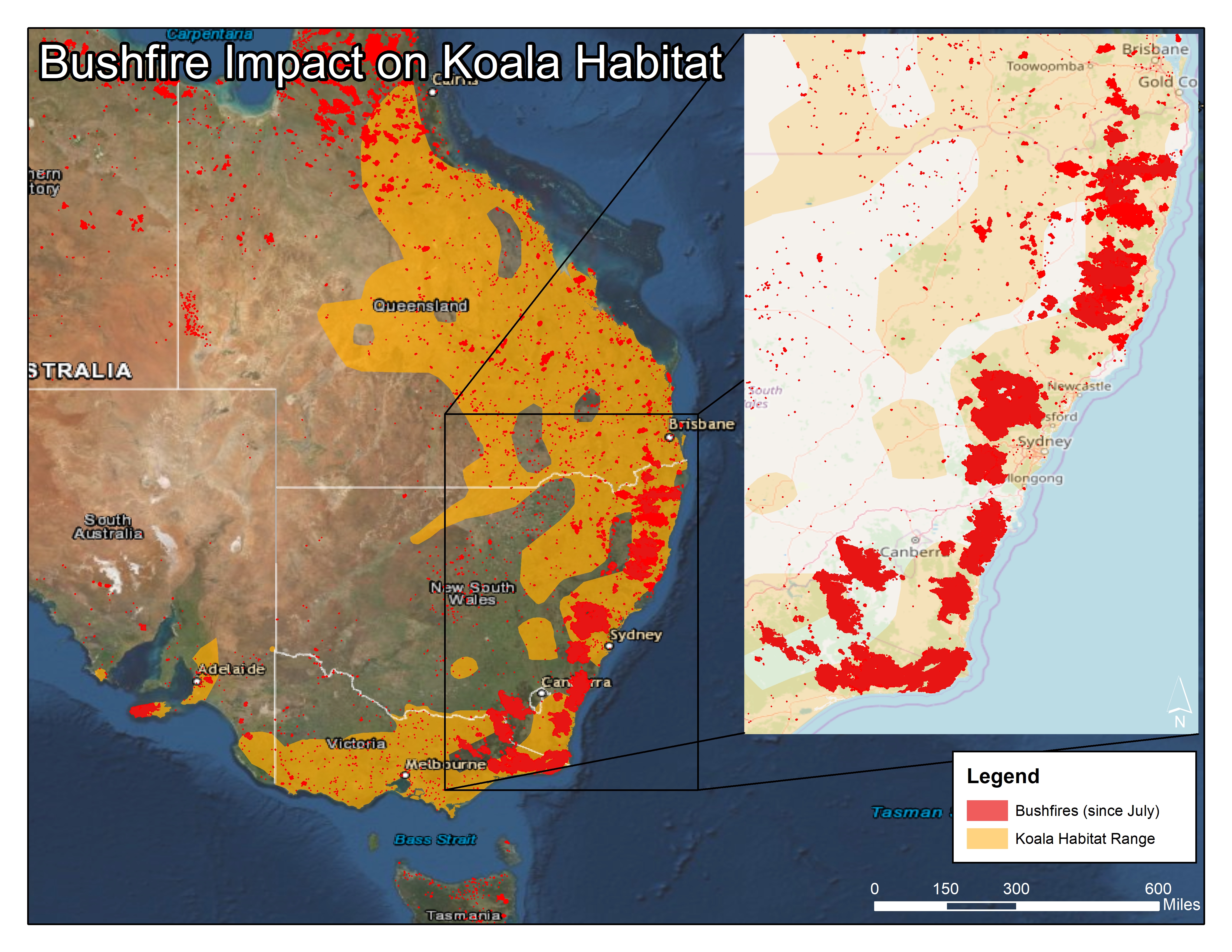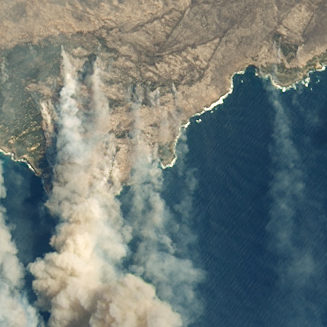We’ve featured multiple stories and updates on the heartbreaking bushfire season unfolding in the Eastern and Southeastern Australia this winter. Among the many stories that have come out of the tragic circumstances has been the bushfires’ impact on the Koala population. RedZone decided to dive deeper into where the Koalas reside and take a look at how much of their habitat has been impacted the last few months. Unfortunately, the findings are largely concerning for the future of Koala’s across Australia.
Australia’s Koala Situation
The State’s best estimates in Australia determined that roughly 300,000 mature Koalas live across Queensland, New South Wales, Victoria and southeastern South Australia. According to the International Union for Conservation of Nature (IUCN) Bushfires are among the three worst threats to a species that’s been classified on their ‘Red List’ as “Vulnerable.” Due to the marsupial’s limited range, evading threats like these rapidly spreading bushfires is nearly impossible. Other major threats to their declining population from this 2014 report include disease and habitat destruction and fragmentation contributed by both human factors and climate change.

Koala’s are considered ‘Vulnerable’ on the IUCN Red List
Moreover, the Koala has a specialist diet, mostly limited to the foliage of Eucalyptus species. As a result, this limits their habitat to where Eucalyptus species exist, and can cause themselves issues during droughts with defoliation and tree mortality. The map below shows a general range which Koala’s are found along with the bushfire activity the since July of 2019. As you can see, much of the burned areas overlap the Koala habitat. Hence, the widespread concern for their well-being. Koalas do not only inhabit these forested areas though; fauna death numbers as high as one billion have been attributed to this period of bushfire activity.

Koala Habitat versus Fires since July in Eastern and Southern Australia. The largest fires have directly impacted coastal populations of not just Koalas, but many fauna. Officials have estimated one billion fauna have lost their lives due to the bushfires, 80% of which are only found in Australia.
Koala Facts
- Estimated 300,000 mature individuals across the country
- Koalas’ population exists only in northeastern, central, and southeastern Queensland with patchy populations in western areas; eastern New South Wales including the coastal strip and highlands of the Great Dividing Range, as well as the western plains and related riparian environments where suitable habitat occurs; Victoria; and southeastern South Australia.
- In the wild, longevity of 12 (for males) to 15 years (for females) has been reported
- Generation length is 6-8 years .
- 29% decline in population the last three generations (18-24 years)
- Contributing Factors: Loss of habitat, bushfires, disease
- Movement Patterns/Home Range: Not a migrant, range is forest dependent but generally between 10-135 hectares (only half a square mile).
- Koala’s are one of 6,726 “Vulnerable” Species across the planet
Koala Outlook Trending the Wrong Direction
Research has shown Koala subpopulations may show marked fluctuation, with severe crashes associated with over-grazing and with long periods of low rainfall or episodes of very high temperatures. Unfortunately, this suggests even those Koala’s not directly affected by bushfires are still quite vulnerable to the ongoing drought and any and all future droughts or hot spells.
Climate change & Rising Annual Temperatures → Longer, more severe droughts → Tree mortality, Malnutrition of the species, disease, increase in bushfire activity and size → All contribute to a continued future decline in Koala population.
Source(s)
International Union for Conservation of Nature (IUCN) 2019. The IUCN Red List of Threatened Species. Version 2019-3. http://www.iucnredlist.org. Downloaded on 10 December 2019.
https://www.iucnredlist.org/species/16892/21960344#text-fields
NASA Images
https://www.cntraveler.com/story/how-koalas-are-impacted-by-australias-wildfires-and-what-you-can-do-to-help




